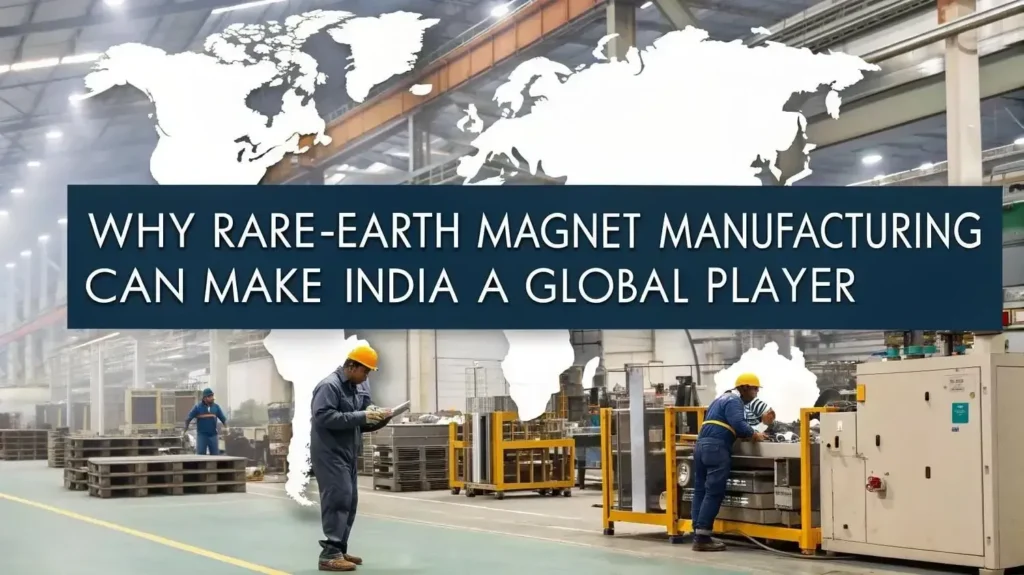The rapid expansion of the power sector in India and across the world has significantly boosted the demand for electrical infrastructure components, especially insulators. Among these, High Tension (HT) and Low Tension (LT) insulators are crucial for ensuring the safe and efficient transmission and distribution of electricity. With rising investments in renewable energy, smart grids, and rural electrification, the HT & LT Insulators Manufacturing sector presents a lucrative business opportunity for entrepreneurs and investors alike.
Market Potential of HT & LT Insulators Manufacturing
HT & LT Insulators Manufacturing plays a vital role in the electrical and power distribution industry. HT insulators are used in high voltage applications typically above 1000 volts, whereas LT insulators are suitable for systems below 1000 volts. Both types are critical in preventing unwanted current flow, ensuring the safety of personnel and equipment.
The Indian power transmission and distribution industry is undergoing massive transformation, driven by schemes like Deendayal Upadhyaya Gram Jyoti Yojana (DDUGJY) and SAUBHAGYA (Pradhan Mantri Sahaj Bijli Har Ghar Yojana). Furthermore, the government aims to add over 500 GW of renewable energy capacity by 2030, which will require substantial upgrades in the transmission infrastructure—directly boosting the demand for HT & LT insulators.
Globally, the insulator market is expected to reach USD 8–10 billion by 2030, with Asia-Pacific leading the growth. This upward trend creates a timely and profitable opportunity for launching an HT & LT Insulators Manufacturing unit.
See Also: Top Business Ideas
Types of Insulators to Manufacture
In HT & LT Insulators Manufacturing, the choice of product types depends on the intended voltage applications, materials used, and installation conditions. Commonly manufactured types include:
-
Pin Insulators: Mostly used for LT lines.
-
Post Insulators: Suitable for HT substations.
-
Disc Insulators: Widely used in HT transmission lines.
-
Strain Insulators: For supporting high tension wire loads.
-
Shackle Insulators: Found in LT distribution systems.
These insulators can be made from ceramic (porcelain), composite (silicone rubber), or glass, depending on the specifications and application.
Raw Materials Required
For a successful HT & LT Insulators Manufacturing unit, consistent access to quality raw materials is essential. The main materials include:
-
Clay and Silica (for porcelain): The base for ceramic insulators.
-
Polymer Resins and Fiberglass Rods: For composite insulators.
-
Glass: Used in toughened glass insulators.
-
Metal Fittings: Such as caps, bolts, and base plates.
-
Glazes and Oxides: For finishing and performance enhancement.
Procurement strategies should focus on reliable domestic or international suppliers to maintain production continuity and quality.
Manufacturing Process Overview
The process of HT & LT Insulators Manufacturing involves multiple stages, which vary depending on the type of insulator and material. Below is a simplified process for porcelain insulators:
-
Raw Material Preparation: Clay and other minerals are cleaned, crushed, and blended in proper proportions.
-
Forming: The mixture is shaped into the desired insulator form using molding or extrusion techniques.
-
Drying and Firing: Formed insulators are dried and then fired in high-temperature kilns to enhance mechanical strength.
-
Glazing: A protective glaze is applied and refired to improve electrical insulation and weather resistance.
-
Assembly: Metal parts are assembled using cementing or crimping processes.
-
Testing: Finished products undergo electrical and mechanical testing to meet IS/IEC standards.
-
Packing and Dispatch: Insulators are packed using shock-resistant materials and sent to clients.
Composite and glass insulators follow different but equally rigorous processes involving polymer extrusion, assembly of fiberglass rods, curing, and testing.
Plant Setup and Investment Requirements
To establish an HT & LT Insulators Manufacturing unit, certain essential infrastructure and equipment are necessary:
Infrastructure:
-
Land: Minimum of 10,000–20,000 sq. ft.
-
Power Supply: High voltage power line access.
-
Water Connection: For cooling and mixing.
-
Waste Management: Compliance with pollution norms.
Machinery:
-
Clay processing unit
-
Molding/extrusion machines
-
High-temperature kilns
-
Glazing unit
-
Assembly tools and presses
-
Quality testing equipment
-
Packaging system
Estimated Investment:
-
Small-scale unit: ?1.5 to ?2.5 crore
-
Medium-scale unit: ?3 to ?5 crore
-
Large-scale unit: ?6 crore and above
This includes costs for land, building, machinery, raw materials, labor, and working capital.
Regulatory Compliance and Licensing
Setting up an HT & LT Insulators Manufacturing business requires multiple approvals and certifications:
-
Udyam Registration (MSME)
-
Factory License
-
GST Registration
-
Pollution Control Board Clearance
-
BIS Certification (e.g., IS 731 for porcelain insulators)
-
Fire & Safety Compliance
Adhering to Indian Standards and international IEC regulations helps gain trust in both domestic and export markets.
Human Resource Requirements
Skilled and semi-skilled manpower is crucial for running the plant efficiently. A medium-scale HT & LT Insulators Manufacturing unit may need:
-
Plant Manager (1)
-
Engineers (Electrical/Chemical) (2–3)
-
Production Supervisors (2)
-
Skilled Technicians (8–10)
-
Quality Control Experts (2)
-
Packing & Logistic Staff (4–6)
-
Admin & Accounts Personnel (2–3)
Regular training and safety drills ensure better productivity and fewer accidents.
Profitability and ROI
HT & LT Insulators Manufacturing is a capital-intensive industry but offers healthy returns over time. The profitability depends on:
-
Production capacity utilization
-
Efficient raw material management
-
Market demand
-
Export potential
-
Maintenance of quality standards
On average, a well-managed unit can expect ROI within 3–5 years. Profit margins range between 12% to 18% depending on order volume and cost control.
Marketing and Sales Strategy
To succeed in the HT & LT Insulators Manufacturing space, a solid marketing strategy is essential:
-
Target Market: Power utilities, EPC contractors, government tenders, renewable energy companies.
-
Brand Building: Obtain BIS certification, ISO standards, and industry awards.
-
Online Presence: A dedicated website, product catalog, and presence on B2B portals (like IndiaMART, TradeIndia).
-
Participation in Trade Fairs: Display products at Electrical Expo, ELECRAMA, etc.
-
Liaison with Power Utilities: Tie-ups with state and central electricity boards.
Export potential should also be explored in Africa, Southeast Asia, and the Middle East, where electrification projects are booming.
Future Scope and Trends
The HT & LT Insulators Manufacturing industry is poised for robust growth. Key trends shaping the future include:
-
Rise of Smart Grids: Increased use of advanced insulators with embedded sensors.
-
Green Materials: Demand for eco-friendly, recyclable insulators.
-
Customization: Client-specific shapes, voltage ratings, and designs.
-
Automation: Use of robotics and AI in manufacturing and inspection processes.
With continuous innovation and adherence to quality, manufacturers can expand into high-voltage insulators, composite polymer insulators, and other allied segments.
See Also: new Trending Manufacturing Business Plan
Conclusion
HT & LT Insulators Manufacturing is a promising business opportunity aligned with India’s and the world’s power infrastructure goals. With increasing electricity demand, government support, and technology advancements, starting this manufacturing unit can be both profitable and impactful. Entrepreneurs willing to invest in quality, compliance, and efficient operations will find long-term success in this sector.





